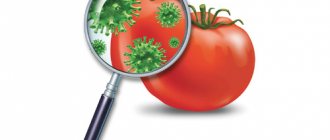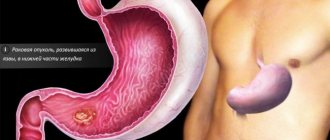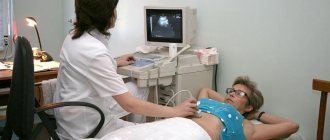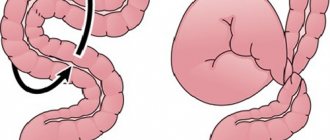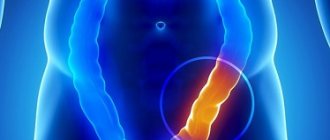A large number of microorganisms living in the environment also inhabit the human body. Some of them are absolutely harmless and even useful, while others, on the contrary, lead to the development of serious pathologies. There are also those that are initially useful inhabitants, but under certain conditions begin to actively reproduce, causing an inflammatory reaction.
Experts call such microorganisms opportunistic. These include enterobacteria. Their family includes Escherichia coli, Klebsiella Escherichia and others. Escherichia coli was named Escherichia coli because it was first identified by the German microbiologist Escherich. The bacterium lives for a long time in a humid environment, as well as in refrigerators and hospital conditions.
It is found in water bodies, on tree leaves, household items, and in the soil. Neutralization occurs after boiling and treatment with disinfectant solutions. The types of E. coli are quite diverse. They are grouped into several main groups that can affect the intestines. They are an integral part of the normal digestive process and microflora.
The pathological activity of these bacteria manifests itself as a result of infection. Some types of these microorganisms can cause severe gastrointestinal and genitourinary disorders. Others are non-pathogenic, that is, they do not cause the development of infectious diseases.
Varieties
There are a huge variety of Escherichia species, but experts group them into four main groups:
- Enterotoxigenic. They are the cause of diarrhea in newborns. Bacteria adhere to the inner lining of the small intestine and provoke the formation of toxic substances.
- Enteroinvasive. Causes bloody diarrhea and abdominal pain.
- Enteropathogenic. Can cause vomiting, diarrhea, and pain. The appearance of the disease is associated with climate change.
- Enterohemorrhagic. Considered the most dangerous type. Cause cramping pain, fever, diarrhea. Hemolytic Escherichia coli belongs to this group. The enterohemorrhagic type can cause hemolytic anemia and impaired renal function.
All of the above-mentioned types of Eschirichia are hardy and can adapt well to various environmental conditions. Dairy products are a favorable environment for the active proliferation of these bacteria.
Pregnancy period
The period of gestation creates favorable conditions for the active growth of pathogenic microorganisms. The female body experiences physiological stress, which leads to a natural decrease in the immune system.
Important! When actively multiplying, E. coli release toxic substances that damage cells and tissues.
Eschirichiosis during pregnancy can cause dangerous consequences. Bacteria can lead to early rupture of amniotic fluid. This can lead to miscarriage or premature birth. From the vagina, pathogens can penetrate the placental barrier into the fetal bloodstream. This can lead to congenital pathologies. E. coli often causes meningitis in children.
The baby is infected while passing through the birth canal. This can lead to developmental delays or even death. It is simply impossible to do without antibiotics in the treatment of E. coli. Gynecologists always select safe antibacterial agents for pregnant women. Infusions of medicinal herbs for washing will provide auxiliary assistance. You can use calendula, string, chamomile.
Pregnant women are at risk for infection
Causes
Infection can occur through consumption of unwashed vegetables, fruits, unboiled water or milk. Insufficient heat treatment of meat products and shaking hands with a sick person are other common causes of intestinal infections. Children are most susceptible to the disease. Violation of sanitary standards increases the risk of infection.
In order for infection to occur, a large number of bacteria must enter. The presence of microorganisms in products does not affect their color, taste, or smell, therefore, when consuming contaminated food, a person does not suspect anything.
Dairy products are a favorable environment for the life of E. coli
Cases of morbidity are most often recorded during the warm period of the year. The most common sources of infection are the following dishes:
- meat and fish;
- dairy products;
- sauces, salads;
- creams, confectionery.
Often the disease develops against a background of weakened immunity. Uncontrolled use of antibiotics, respiratory diseases, hypothermia - all this can weaken the body's resistance. Hemolytic bacillus toxins provoke an inflammatory process and structural changes in the intestines. Along with this, general symptoms of intoxication of the body develop.
Routes of infection
Epidemiological outbreaks usually occur during the summer in warm countries, especially during the tourist seasons. E. coli is transmitted in two main ways:
- fecal-oral. In contact with soil, water, agricultural crops;
- contact-household. Most often, infection occurs in groups.
After the birth of a child, E. Coli enters the intestines along with food during the first forty hours. Having colonized the thick section, it remains in it throughout its life. Experts associate the penetration of pathogenic microorganisms with failure to properly comply with hygiene rules. Eating unwashed vegetables and fruits, raw milk, poorly fried fish or meat can lead to the development of intestinal pathology.
This is why E. coli symptoms often appear in children than in adults. Due to their age, children do not fully understand the importance of maintaining hygiene measures. Hemolyzed E. coli can be found on raw vegetables, especially if they are grown on land that is fertilized with manure. If you do not wash your hands after handling an infected animal, there is a risk of infection.
If hygiene rules are not followed, Eschirichia coli easily enters the urinary system, causing the development of cystitis. The risk of such infection is especially high in women. When penetrating the genitals, the stick can cause colpitis - inflammation of the vagina. In men, it can cause prostatitis.
Symptoms
The period from infection to the appearance of the first clinical symptoms lasts from three to six days. The penetration of an infectious agent stimulates the appearance of symptoms of gastroenteritis:
- pain in the epigastric region;
- nausea;
- feeling of heaviness in the stomach;
- vomit;
- diarrhea;
- headache and dizziness;
- slight increase in temperature;
- loss of appetite;
- weakness and decreased performance;
- dehydration of the body.
In severe cases, arterial hypotension, pallor and cyanosis of the skin, convulsions, and a state of shock are observed.
Intestinal infection causes cramping abdominal pain
Symptoms
Signs of escherichiasis largely depend on which strains have affected the gastrointestinal tract (GIT). If the body is affected by enterotoxigenic bacilli, the symptoms of intoxication are mild. The disease occurs acutely with increasing weakness, fatigue and dizziness. At the same time, the temperature may even remain within normal limits. The abdomen is swollen, cramping pain is noted.
Symptoms of escherichiosis depend on which strain the body is infected with. The photo shows the main strains of pathogenic E. coli
Then diarrhea, nausea, and vomiting appear. Escherichiosis caused by enterotoxigenic bacilli is called cholera-like, since its manifestations are similar to the clinical course of mild cholera. If the disease is caused by enteroinvasive bacilli, general intoxication symptoms come to the fore. A person is worried about weakness, chills, headaches, and fever. After some time, cramping pain appears, as well as diarrhea mixed with blood and mucus.
Enteropathogenic eschirichiosis in newborns can become systemic in the form of sepsis. Enterohemorrhagic bacilli cause symptoms of enterocolitis. Loose stools with blood appear, as well as abdominal pain and tenesmus. The incubation period ranges from one to five days. Intestinal infection is characterized by an increase in symptoms of intoxication.
The main signs of the development of pathological activity of E. coli include:
- weakness and malaise;
- nausea and vomiting;
- diarrhea;
- feces become yellow;
- bloating;
- drowsiness and apathy;
- lack of appetite;
- pain in the navel area.
Gastrointestinal tract
Most often, E. coli affects the digestive tract. This manifests itself in the form of diarrhea up to ten to twelve times a day. Patients also experience a false urge to defecate. The feces take on a yellow appearance mixed with mucus and a small amount of foam. Usually the disease lasts from three to six days. Children under one year of age experience abdominal pain, increased gas formation, nausea, regurgitation, and drowsiness.
Infection with enterotoxigenic bacilli is also called traveler's diarrhea. Most often it bothers people who are in a different climate zone. The illness usually lasts only a few days and manifests itself in the form of diarrhea, pain in the stomach, fever, nausea, vomiting, lethargy, and headache.
urinary system
Pathogenic strains can enter the urinary system in several ways:
- failure to comply with personal hygiene rules. Pathogens can enter the vagina and urethra from the anus. Microorganisms can also spread from an inflamed vulva or vagina;
- upward path. The pathogen enters the upper sections through the urinary canals;
- hematogenous infection. Escherichia coli spreads through the circulatory system;
- lymphogenous pathway, that is, through the lymphatic vessels.
This may be caused by wearing tight-fitting underwear. As a result, the perineum sweats and pathogenic microorganisms easily move from the anorectal area to the vagina or perineum. Anal sex is another cause of infection. If the penis first penetrates the anus and then the vagina, it thus transfers microflora from the urinary system to the genital area.
Experts also identify unfavorable factors that contribute to urine retention in the kidneys or bladder: strictures, stenoses, and tortuosity of the urethra. This also includes the period of pregnancy, when the enlarged uterus puts pressure on the bladder.
Cystitis caused by Escherichia coli is manifested by the following symptoms: frequent urination, a feeling of incomplete emptying of the bladder, pain in the lower abdomen, a burning sensation during urination. White flakes and sediment will appear in the urine, and it will acquire an unpleasant odor. Blood is also often found. Patients complain of general malaise, weakness, and fever.
Nausea and vomiting may occur. Treatment of E. coli largely depends on which part of the urinary system was affected, as well as what form and course the pathological process took. To combat the disease, antibiotics, uroseptics, vitamins, analgesics, and antipyretics are used.
In a throat swab
Patients are bothered by sore throat and constant sore throat. Treatment includes the use of antibiotics and diet. Fermented milk products must be included in the diet.
In a smear from the cervical canal
E. coli enters the cervical canal from the intestines after defecation. In the absence of proper hygiene and frequent wearing of synthetic underwear, the risk of infection increases significantly. A woman may not be aware of infection by microorganisms for a long time. And the first symptoms may be perceived as manifestations of thrush. The bacteria cause itching, irritation and redness of the vulva and vagina.
Hemolyzing Escherichia coli in adults
First, let's talk about how the disease manifests itself in women. Pathogenic microorganisms are able to penetrate the genitourinary system. The reasons for this may be:
Abdominal pain and fever
- insufficient adherence to intimate hygiene rules;
- wearing compressive synthetic underwear. This creates a greenhouse effect. Residues of feces may become dislodged and penetrate the vagina;
- improper washing. Not from top to bottom, but from the side of the anus to the genitals;
- anal sex.
As for men, E. coli often penetrates the urethra. Bacteria infect the urethra, causing complications on the genitals and urinary system. According to statistics, more than half of cases of chronic prostatitis are caused by exposure to E. coli.
In men
The reason for taking a smear in men may be complaints of pain and cramping in the urethral area, the appearance of pathological discharge from the urethra, redness of the external os of the urethra, a rash on the penis, pain during intimacy. With a mild form of infection, male thrush occurs. The reason for this may be unprotected sex or poor hygiene.
To prevent candidiasis, you should use gels for intimate areas and be sure to shower after sexual intercourse using bactericidal agents. The doctor may prescribe a smear even if there are no complaints. The study is indicated when examining a couple regarding childlessness, before urological manipulations, as well as identifying vaginitis in a sexual partner.
If E. coli was detected by chance and nothing bothers the man, such carriage does not require specific treatment. If signs of inflammation were detected in the smears, it is additionally necessary to do a PCR test for hidden infections, as well as culture of the discharge.
E. coli can cause prostatitis
Features of the development of infection in children
The gastrointestinal tract of a newborn baby is absolutely sterile. Only over time does bacterial microflora inhabit the intestines. The baby develops bloating, abdominal pain, and develops diathesis. Feces acquire a liquid or mushy consistency with an unpleasant odor. The stool becomes foamy with a greenish tint.
Improper storage of dairy products or contaminated breast milk can cause infection
An intestinal infection causes dehydration, which manifests itself in the following symptoms:
- dry skin and mucous membranes;
- the appearance of folds on the skin;
- crying that is not accompanied by the release of tear fluid;
- infrequent urination.
The child often spits up, diarrhea gives way to constipation. Intestinal colic worsens with feeding. The child begins to refuse food and becomes capricious. The condition requires immediate help, as the child may die because of this.
Newborns can become infected from their mother. Poor nutrition, gastrointestinal disorders, weak immunity - all this can lead to infection. The child is prescribed prebiotics and probiotics. The first group of drugs does not contain beneficial bacteria, but they contain substances that stimulate the development of the microorganism population.
Popular representatives of prebiotics are Hilak-forte and Duphalac. If we talk about probiotics, they are distinguished by the presence of prepared cultures of beneficial bacteria in their composition. To combat dehydration and replenish fluid loss, rehydration solutions are prescribed.
Enterosorbent agents can remove toxic substances from the body. Along with this, the mother should also follow a dietary diet. It is recommended to consume fruits and prune decoction. There is no need to stop breastfeeding.
Mother's milk contains lactose, which will help normalize digestion processes and populate the intestines with beneficial microorganisms. If the child is bottle-fed, then it is better to give preference to mixtures with prebiotics. Their use should be discussed with your doctor.
Breast milk can help fight intestinal infections
Complications
In adults, an intestinal infection spreads to the genitourinary system and causes an inflammatory process. The bacterium is a common cause of cystitis and pyelonephritis. In women, inflammatory processes of the uterine appendages often develop, and in men, prostatitis.
Elderly people whose bodies are weakened by chronic infections may develop the following complications:
- heart failure;
- thrombosis;
- blood poisoning;
- infectious-toxic shock;
- hypovolemic shock.
Escherichia coli can also cause hemolytic-uremic syndrome. It develops against a background of weakened immunity. The bacterium destroys capillary walls and disrupts blood microcirculation.
The development of hemolytic-uremic syndrome can be suspected by the following signs: the presence of blood in the stool, high temperature, hemorrhages, inflammation of the large intestine, vascular thrombosis, necrosis of small vessels, renal failure.
Weakened immunity becomes a common cause of complications
Causes of diseases caused by E. coli
Digestive disorders, proliferation of pathogenic serotypes of Escherichia coli and dysbiosis can occur due to many diseases of the digestive system, especially the pancreas (pancreatitis) and intestines (colitis, enterocolitis).
In addition, taking certain antibiotics that suppress those microorganisms that are responsible for preventing the proliferation of pathogenic flora can disrupt the normal intestinal microflora.
To avoid dysbiosis and digestive disorders, it is necessary to correctly select antibacterial drugs, their dose and those medications that will protect the normal intestinal microflora.
Infection with pathogenic strains of Escherichia coli occurs predominantly through the fecal-oral route. Violation of food hygiene rules, eating dirty fruits and vegetables, and using contaminated or waste water for irrigation contribute to the development of diseases. It is also dangerous to eat undercooked meat or drink unboiled milk, because cows, goats, pigs and sheep can carry pathogenic strains of E. coli.
